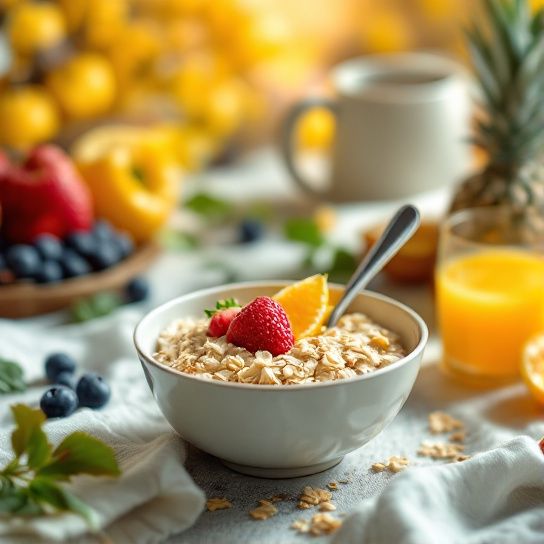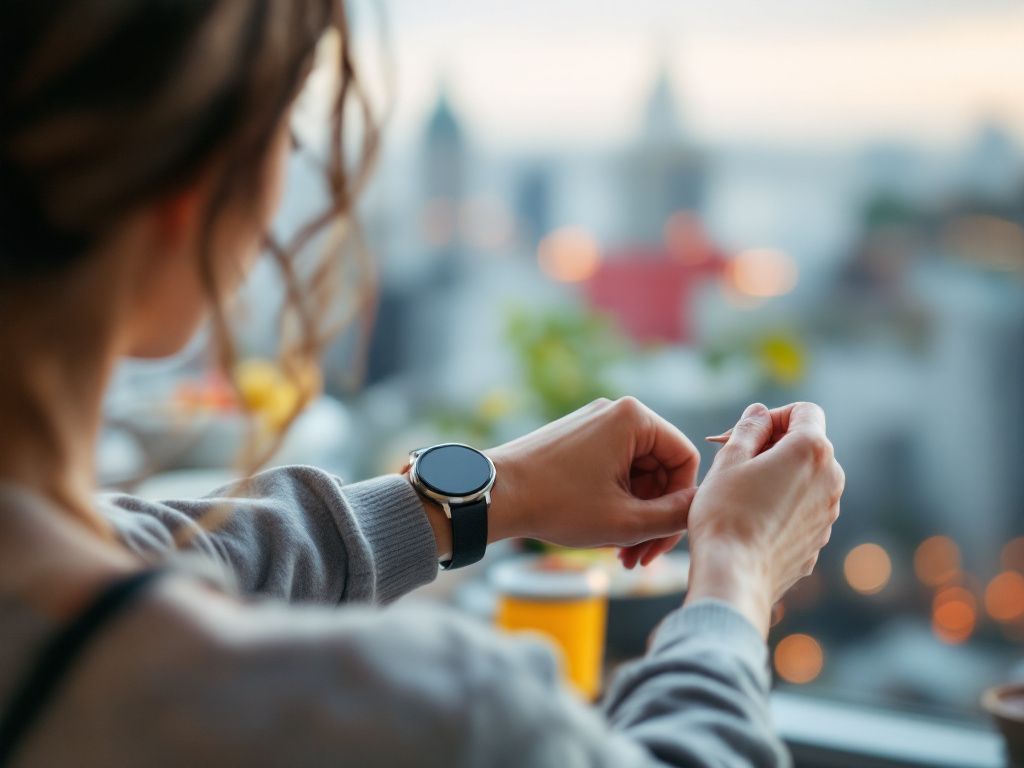Alright, let’s dive into something that’s got a bit more depth than just the ‘what’—we’re talking about ‘when’ here. Specifically, how meal timing can lend a hand with that persistent and oh-so-annoying visitor we call acne. You might be here thinking, “Does it really matter when I eat?” Quick spoiler—it does, and I’m going to walk you through all the juicy details.
Table of Contents
ToggleWhat’s the Buzz About Meal Timing?
We chat a lot about what to eat: low-carb, high-protein, the whole kale smoothie saga, but meal timing? Often it doesn’t get its fair dues. If you’re wondering whether eating at certain times could really help clear up your skin, just hang in there. Eating schedules aren’t just about hunger games, they’re about syncing with your body’s natural rhythms—because your skin has its own ‘clock’ too.
Now, let’s spill the tea (or shall I say the clear-skin secret) on why timing might be your new best friend.
Skin Signals: Understanding Your Body’s Rhythm
So, here’s the deal—your body loves patterns. It thrives on them. This biological rhythm, which you might have heard of as the circadian rhythm, can affect your skin. Crazy, right? When we eat is largely connected to how well our digestive system, metabolism, and overall health function, and as it turns out, this can lead to changes in our skin.
Imagine feasting on a juicy pizza at midnight—your internal log says, “Whoa, hold up, wasn’t expecting this!” Our bodies might process these late-night meals with an added stress that can show up on your skin. We’re all about finding that golden hour for meals which won’t throw your body’s processes into chaos.

The Science Behind Meal Timing and Acne
Alright, hang with me. What happens when your system gets a surprise meal slam when it’s not expecting it? There’s an uptick in stress hormones, and the digestive system is pressed to work overtime—leading to inflammation. And guess what runs right back to invite acne into the party? Yes, inflammation!
Chowing down at consistent, sensible times helps maintain balanced hormones and minimizes stress responses. This could mean fewer outbreaks.
Connecting the Dots: The Eating Schedule Strategy
- Morning Meals: Start your day with a solid breakfast within an hour of waking. Think of porridge topped with fruits or scrambled eggs. Trust me—after a fast during the night, your skin’s yelling for hydration and nutrients, ready to use those building blocks to keep it in balance.
- Midday Feeding Frenzy: Lunch is where you refuel. Aim for between noon and 2 PM, tapping into peak digestion hours when your gut is primed to absorb. Pack it with greens, lean proteins, and whole grains. Your gut and skin will thank you!
- Dinner Date: Wrap it up by 7 PM if you can. Eating late could disrupt those nightly rejuvenation processes. A light-ish meal like grilled chicken or fish with steamed veggies? Solid choice if you ask me.
Late-Night Snacking—Yay or Nay?
We need to talk about those midnight raids. Our bodies aren’t prepared for inputs at unreasonable hours—like doses of sugar or fried snacks during late-night TV binges. Instead, try drinking warm phytotherapy teas or a small serving of yoghurt that can soothe the tummy rather than irritate it.

Stress and Its Unwelcome Team-Up with Acne
Here’s where the eating schedule gets a bit more clout. By managing when you eat, you’re decently cutting down a chunk of unnecessary stress on your system.
Say goodbye to cortisol spikes that come when your biological clock is out of sync because, believe it or not, stress is a major player alongside genetics and hormones in acne formation. The lower the stress, the happier your skin tends to be.
Chat with a Skincare Savior
Okay, let’s circle back to this idea with some chill options. Pair a solid eating schedule with:
- Regular facial cleanses to clear out city grime.
- Moisturizing religiously to keep your tissue plump (yes, even with oily skin).
Your skin is kinda like a plant—it wants water, nutrients, and to not feel ignored.”
Regime Reset: Timing Focused Experiment

Now, ‘giving this a try’ never hurt anyone; at worst, you’re aligning better with your hunger pangs! Here’s a simple plan:
- Set Your Meal Times: Pencil in specific eating hours more regularly. Remember, breakfast really is the meal that wakes your body up, saying “let’s do this!”
- Meal Prep Like a Pro: By planning meals, you dodge the temptation to nosh on the weirdest things at odd times. Plus, prepping leans into choosing nutritious foods.
- Track and Tweak: Stick this out for at least a month. Maybe even jot down in a journal about how shifting these eating windows feels. Have a mirror in your face selfies and notice any skin goodies that come along with these changes.
Whether Your Skin Prospers or Pouts
We’ve covered a lot of ground, haven’t we? Now it’s your turn. Look at meal timing as another tool in your skincare routine toolkit. By adjusting your eating schedule, you could observe notable skin clarity without applying a single ointment. Pretty sweet, huh?
Of course, keep those expectations balanced, and maybe involve your friendly dermatologist for insights suited to your skin’s unique character. Every little shift makes a difference, and before you know it, keeping an eye on the clock might slide into habit without you blitzing around some elaborate diet.
So, clock in some air-kisses goodnight for your cheek-clearing mission-by-the-clock, and let balanced meals usher in a face you’ll be hyped to flaunt!
Frequently Asked Questions
What is an eating schedule, and why is it important?
An eating schedule refers to a planned and consistent timing for meals and snacks throughout the day. It is important because it helps maintain a healthy weight, avoids malnutrition, and keeps body rhythms consistent, which can improve overall health and wellness[5].
How does an eating schedule impact my health and weight?
An eating schedule can significantly impact health and weight by ensuring regular and balanced meals, reducing the risk of over or under-eating, and avoiding late-night meals that can increase obesity and disrupt sleep. Consistent eating patterns also help in maintaining robust circadian rhythms and can reduce the risk of chronic diseases such as obesity, cardiovascular health issues, and type 2 diabetes[1][5].
Who benefits most from creating an eating schedule?
Individuals who benefit most from creating an eating schedule include those who live alone and frequently skip or forget meals, people with dementia or other cognitive health issues, those who struggle with overeating, and individuals with poor appetite or specific dietary needs such as those with diabetes[5].
How can I effectively plan and maintain an eating schedule?
To effectively plan and maintain an eating schedule, it is advisable to set consistent meal times, plan meals and snacks in advance, and ensure that the meals are balanced and nutrient-dense. Using tools like meal planning, grocery lists, and home-delivered meals can also help in maintaining consistency and reducing stress related to meal preparation[3][5].
References







